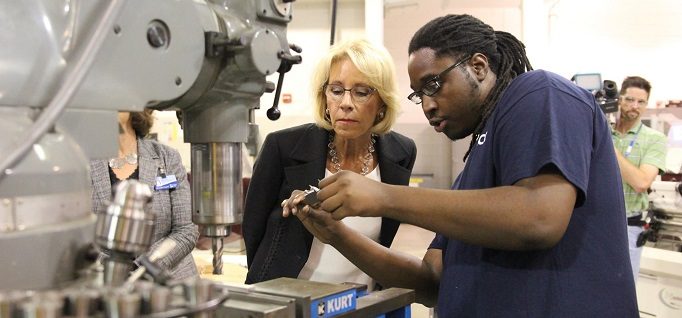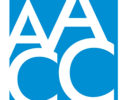Recapping the summer of apprenticeships
By AACC 21st Century Center Staff
August 3, 2017
Apprenticeships have been in the spotlight recently, both in and out of Washington, DC.
It’s been the summer of apprenticeships. They’ve been the focus of congressional committee hearings and White House executive orders. Earlier this week, Education Secretary Betsy DeVos visited Grand Rapids Community College (Michigan) to learn more about apprenticeships and the skilled trades.
The House Higher Education and Workforce Development Subcommittee last week heard from companies and programs that use the apprenticeship model to train workers for open positions. Speakers emphasized that all types of high-quality training programs — including workforce development programs at community colleges — are needed to fill workforce gaps. There are some 6 million job vacancies in the U.S., according to the congressional Joint Economic Committee, which held its own hearing to discuss closing the skills gap in early July.
Tapping all training models will be vital in meeting the workforce needs should President Donald Trump’s $1 trillion infrastructure proposal come to fruition.
Speaking of Trump…he showed his love for apprenticeships in June. During a weeklong apprenticeship push, he visited Wisconsin’s Waukesha County Technical College with his daughter, Ivanka, Labor Secretary Alex Acosta and Wisconsin Gov. Scott Walker.
Trump also signed an executive order that week that devotes more money for apprenticeship programs, and creates a bigger role for private companies in designing those programs. Federal restrictions would be eased to empower “these companies, the unions, industry groups, federal agencies to go out and create new apprenticeships for millions of our citizens,” Trump said in remarks at the White House.
Despite bipartisan support for apprenticeship programs, the House Appropriations Committee on July 19 passed a fiscal year 2018 funding bill that slashes $95 million from the apprenticeship program.
Fighting the stigma
While apprenticeships may help get people in well-paying jobs, there’s still a stigma against acquiring a trade or skill rather than getting a “traditional” degree.
“Apprenticeships and other skilled trades operate largely on word-of-mouth solicitation. The only way the stigmas and doubt surrounding skilled trades and apprenticeships is going to change is by a movement from within the networks using apprenticeships today,” wrote Mark Dunneback, assistant professor of manufacturing at Ferris State University, in an article in CC Daily.
Dunneback did a six-week study on apprenticeship programs operating at community colleges located throughout Michigan. His conclusion? “Today’s program is not your father’s apprenticeship.” Students are offered better support and technology provides colleges with the improved ability to teach skillsets with increasingly transferable value.
“Apprenticeships are hip and current,” Dunneback wrote.
Sending the right signals
While speaking to the Michigan Community College Association last week, DeVos praised community colleges for offering options that help students succeed in “our competitive and constantly changing economy.”
She also called out The Right Signals initiative, which is being led by the American Association of Community Colleges. The initiative “helps employers more fully understand a wide range of credentials, including certificates, degrees, apprenticeships, and badges.”
“This helps develop a better, shared understanding of what students know and can do,” DeVos said.



